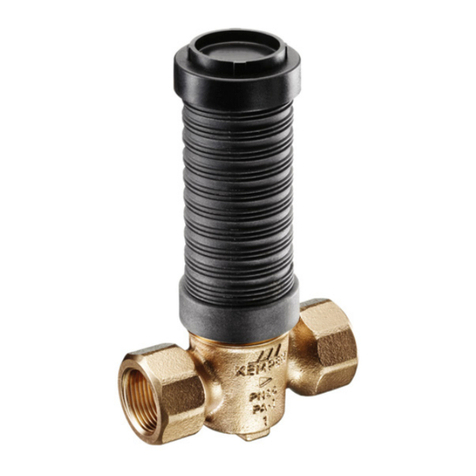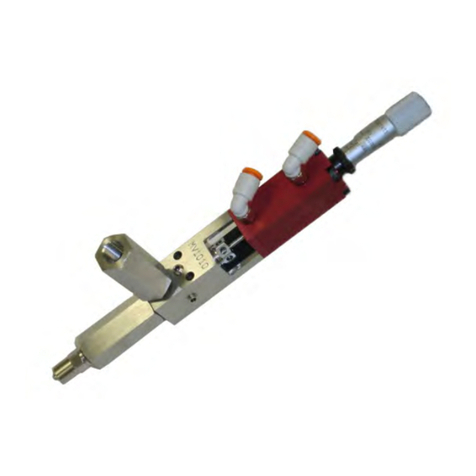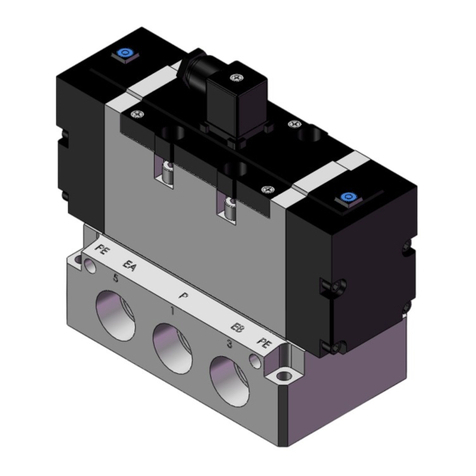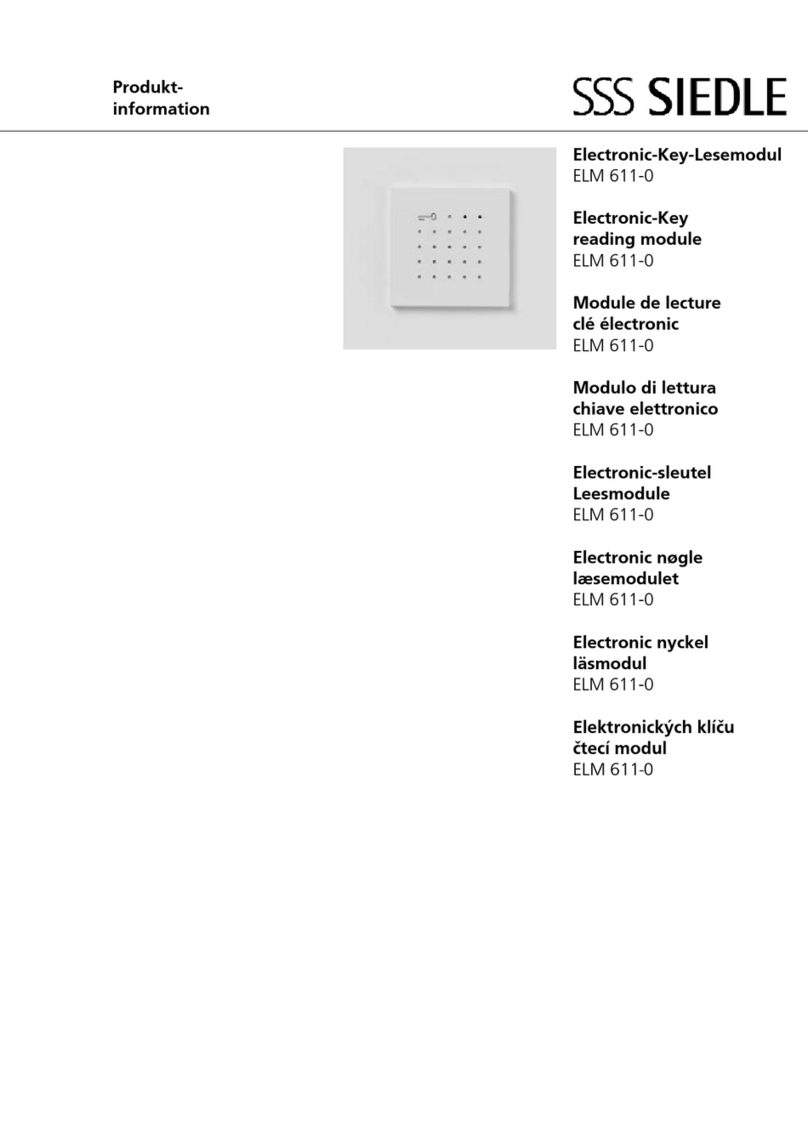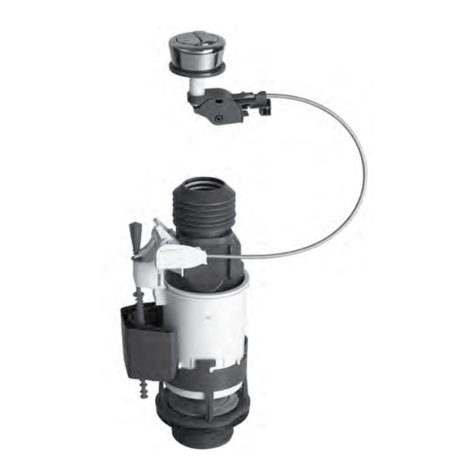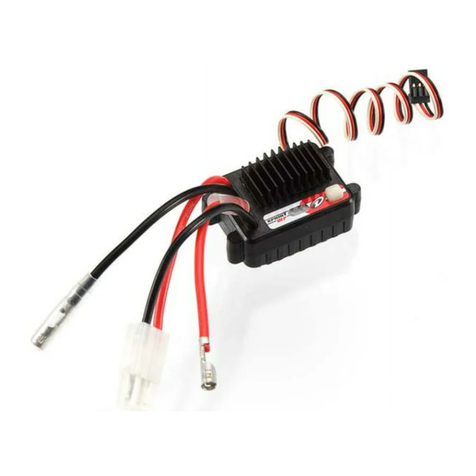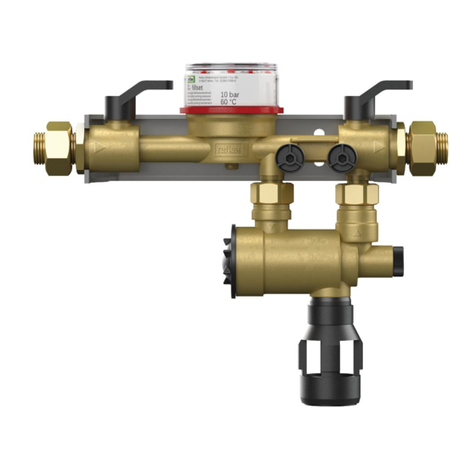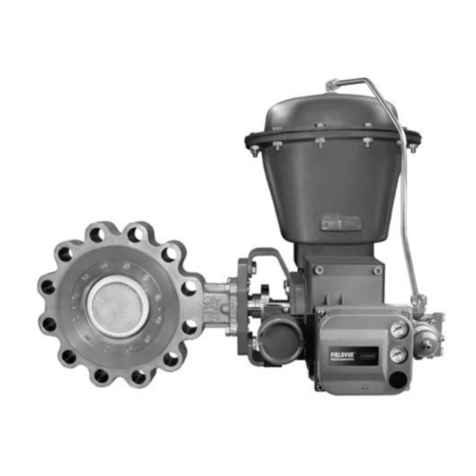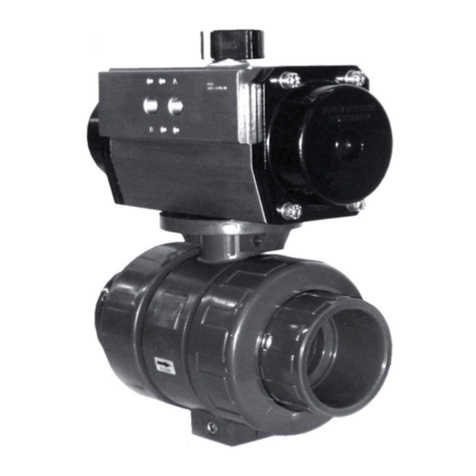Becknoff EtherCAT Operator's manual

Documentation
Infrastructure for EtherCAT/Ethernet
Technical recommendations and notes for design,
implementation and testing
2.1
2017-07-27
Version:
Date:


Table of contents
Infrastructure for EtherCAT/Ethernet 3Version: 2.1
Table of contents
1 Summary ....................................................................................................................................................5
2 Foreword ....................................................................................................................................................8
2.1 Notes on the documentation........................................................................................................... 8
2.2 Safety instructions .......................................................................................................................... 9
2.3 Documentation issue status.......................................................................................................... 10
3 Basics .......................................................................................................................................................11
3.1 Overview of the standard environment ......................................................................................... 11
3.2 Basic Ethernet principles .............................................................................................................. 13
3.3 Total transmission link .................................................................................................................. 14
3.4 Components ................................................................................................................................. 18
3.4.1 Notes on Ethernet components – cables .........................................................................18
3.4.2 Notes on Ethernet components – plug connections ........................................................20
3.4.3 Overview of Beckhoff RJ45/M8 cables for EtherCAT systems ........................................21
3.4.4 Overview of Beckhoff plug connectors for EtherCAT systems ........................................29
3.4.5 Remarks regarding shielding ...........................................................................................31
3.5 Assembly notes ............................................................................................................................ 34
3.6 Design of an Ethernet cable section ............................................................................................. 34
4 Commissioning........................................................................................................................................36
4.1 Measurements of the cable section .............................................................................................. 36
4.2 Notes on certification .................................................................................................................... 38
4.3 Measurement devices................................................................................................................... 41
4.3.1 Explanations concerning measuring devices...................................................................41
4.3.2 Use of the DTX1800/DSX5000 ........................................................................................43
4.4 Troubleshooting ............................................................................................................................ 45
5 Appendix ..................................................................................................................................................50
5.1 AWG conversion........................................................................................................................... 50
5.2 Support and Service ..................................................................................................................... 51

Table of contents
Infrastructure for EtherCAT/Ethernet4 Version: 2.1

Summary
Infrastructure for EtherCAT/Ethernet 5Version: 2.1
1 Summary
The market is growing for Ethernet as a physical medium for the transport of real time fieldbus protocols in
the industrial environment. Unfortunately, knowledge of this technology is not growing at the same rate as
the enthusiasm for it, even among EtherCAT users. So that basic network principles from the office area are
not applied unreflected to industrial concerns, it is necessary to sensitize planners and users to the
technological aspects.
As a real-time protocol, EtherCAT relies on Ethernet as a physical carrier, and is thus dependent on the
long-term stable operation of the Ethernet connection.
As with other fast transmission systems, disruptive effects can also occur with the high frequency Ethernet
technology in operation or during commissioning if it is used inappropriately. These disruptions are simple to
locate or avoid completely if a few basic principles are followed.
This documentation is intended to provide users with a guideline, without any obligatory character or legally
binding effect, to enable them to plan, install and check reproducibly reliable Ethernet cabling in the industrial
environment.
This document makes no claim to be complete and, in particular, does not replace normative installation
directives such as IEC 61784, fundamental communication directives such as IEC11801/EN50173 or
specific installation directives. This document is mainly intended for the European market. Therefore,
reference is mainly made to European EN standards. The globally important ISO/IEC (International
Electrotechnical Commission, www.iec.ch) standards are often identical in content to corresponding EN
standards.
Based on the following chapters, the fundamental information can be summarized as follows:
• An Ethernet transmission link (channel) is characterized by a (technically related) capability to reliably
guarantee a defined data throughput [Mbit/s] under all defined operating conditions and, hence, high
service quality.
• These performance classes are defined for Europe in the EN50173-1 standard, e.g. ‘Class D’. If a
transmission link verifiably corresponds to a performance class, then it conforms to EN50173. A
component manufacturer (cable, connector) can certify its products according to the limit values from
EN50173 et al. The exclusive use of components certified to EN50173 may be sufficient to ensure the
conformity of the transmission link; in individual cases it must be verified by means of suitable
measuring methods according to EN50346.
• A transmission link for the transmission of Ethernet telegrams can be implemented according to the
requirements of these application-independent standards; however, it does not have to be, in which
case it is application-specific cabling. Experience has shown that cabling that lies far outside the
normative specification also (sometimes) works.
• It is recommended that agreement be reached between suppliers and users on the properties and
acceptance procedures with regard to the Ethernet cabling used.
• Borderline Ethernet cabling can work reliably under acceptance conditions, but fail under operating
conditions (aging, EMC, temperature, movement/impact).
• Distinction must be made between Ethernet components certified according to
- European standard series: EN50173 (similar to IEC11801)
- US standard series EIA/TIA 568
The two standards differ slightly and also still use the same terms, such as “Cat 5” or “Class D”. But:
components certified according to TIA568 may not be used in cabling installed according to EN50173.
In most cases no complications arise, but the cabling or the entire installation section is no longer
compliant with the EN standard [EN50173-3, chapter 1].
• As a globally used communication protocol, the ISO/IEC 61918 standard and the ISO/IEC 61784-5
EtherCAT installation profile are authoritative for EtherCAT. These contain definitions themselves or
are based on other ISO standards.
In Europe, the EN standards mainly referred to in this document can be applied. The European
member states maintain these EN standards as country-specific standards. Hence, the EN standards
are called “DIN EN” in Germany. Since the technical specifications mentioned in the ISO/IEC standards
are usually based on the general consensus of the professional technical world, most ISO/IEC
specifications are to be found in a similar form in the EN standards. A comparison is not part of this
documentation.

Summary
Infrastructure for EtherCAT/Ethernet6 Version: 2.1
• Extended standard series (ISO24702, EN51918 et al.) have been drawn up especially for industrial
concerns and deal with environmental conditions or with protocol-specific regulations, for example.
However, they do not affect the basic electro-technical principles according to EN50173.
• The performance (i.e. the reliable transmission of 10/100/1000 Mbit/s) of Ethernet cabling generally
depends on the following factors:
- the cable quality (attenuation, cross-section, cable structure, screening) of the individual subsections
- the plug quality (fit, screening, cable suitability)
- the number of intermediate connections
- the ambient temperature (20 to 60 °C, specified with derating according to EN50173)
- Environmental influences (e.g. MICE classification according to EN50173-1, chapter 5: Mechanical/
Ingress/Climatic/Electromagnetic rating)
• In the EtherCAT application area, only the connection performance of 100 Mbit/s FastEthernet
according to EN50173 Class D [up to 100 MHz] is required and is dealt with below. It is permissible for
the user to demand connection classes with a higher performance (classes E [up to 250 MHz], EA, F
[up to 600MHz MHz], FA), but this is not technically justified.
• In order to achieve this performance class, only Ethernet components conforming to EN50173 Cat.5
(minimum) are permissible; see EN50173-3, chapter 1.2, among others.
Components according to EN50173 Cat. 5 are sufficient, but when using wall feed-throughs/double
couplers, these must conform to EN50173 Cat.6 in order to achieve performance class D.
• This document deals at present only with copper-based Ethernet 100Base-TX cabling, not fiber optic
cabling according to 100Base-FX.
• 4-core/2-pair cables are favored in Industrial Fast Ethernet, as opposed to the fully assigned 8-core/4-
pair cables normally used in building automation. This is to be considered during the acceptance test
(see there).
• The recommended assignment of a 4-core/2-pair industrial Ethernet cable is the 1,2,3,6+ screen
configuration based on TIA-568A.
• The following is recommended for the cable cross-sections:
- Wire structure: stranded or rigid core
- Cross-section: AWG26/7 to AWG22/1 accordingly 7 cores 0.14 mm² (stranded) up to 0.34 mm² rigid.
• According to EN50173-1, the maximum permissible configuration for an Ethernet link is 90 meters of
permanently installed cable plus 2 device connection cables of 5 metres each, with a maximum of four
intermediate connectors. Other configurations, such as a direct 100 m long connection, are to be
designed in accordance with EN50173-3, appendix B and tested in the field for conformity to the
performance class.
• Caution when using expressly patch cables/cords: commercially available patch cables up to approx.
10 m are subject to considerably more generous limit values as per EN50173-1, chapter 9 than cables
that are intended for permanent installation as per EN50288. Series connection or an over-length
configuration is to be avoided and, if necessary, checked at least by verification – a simple continuity
test is not sufficient! Application-specific patch cables manufactured from appropriate goods sold by the
meter are also to be checked for their suitability.
• The number of plug connections between the end points is to be reduced to the necessary minimum.
• It is recommended to use exclusively screened Ethernet cables as per EN50288-2 (STP, SF/UTP).
Together with the special twisted pair execution, the cable screen is instrumental in preventing the
interspersion of interference into the communication cable and thus ensures the reliable operation of
the communication link. The terminal devices must support the screen connection.
In particular when using field-configurable connectors, it must be ensured that there is a technically
perfect, state-of-the-art screen connection between the connector and the cable (see also EN50174-2
and general VDE screening regulations). The qualitative testing of the screening effect is only possible
in the laboratory at present (2011). Therefore, perfect workmanship must be ensured in the execution.
- There must be 360° screen contact at all transitions. Pigtails (twisting the screen braid together
before the contact) are not permitted.
- The screen contact must also be guaranteed on a long-term basis (mechanical or chemical
influences).
- Interruptions and small holes in the screen must be avoided.
- The cable screen must not be used for strain relief.
- The screen material must meet the electrical and mechanical requirements. Special cables are to be
used for drag chains or garlands.
The instructions of cable and connector manufacturers are to be observed.

Summary
Infrastructure for EtherCAT/Ethernet 7Version: 2.1
• The employment of rigid Ethernet cables instead of stranded wires is recommended where possible on
account of the better electrical properties (Attenuationstranded > Attenuationrigid).
• It is recommended to employ larger core cross-sections if possible, (e.g. AWG22 instead of AWG26)
on account of the better electrical characteristics (Attenuationthin core > Attenuationthick core). If the length
exceeds 50 meters, too small a cross-section (AWG26) can prevent conformity to the performance
class!
• It is recommended to check the installed Ethernet cabling before commissioning.
• It is recommended to monitor installed Ethernet cabling during operation using a means of software
diagnosis (e.g. Beckhoff TwinCAT).
In accordance with the specified standards, a verification decision on a cable section can thus be made as
follows:
Fig.1: Verification decision

Foreword
Infrastructure for EtherCAT/Ethernet8 Version: 2.1
2 Foreword
2.1 Notes on the documentation
Intended audience
This description is only intended for the use of trained specialists in control and automation engineering who
are familiar with the applicable national standards.
It is essential that the documentation and the following notes and explanations are followed when installing
and commissioning these components.
It is the duty of the technical personnel to use the documentation published at the respective time of each
installation and commissioning.
The responsible staff must ensure that the application or use of the products described satisfy all the
requirements for safety, including all the relevant laws, regulations, guidelines and standards.
Disclaimer
The documentation has been prepared with care. The products described are, however, constantly under
development.
We reserve the right to revise and change the documentation at any time and without prior announcement.
No claims for the modification of products that have already been supplied may be made on the basis of the
data, diagrams and descriptions in this documentation.
Trademarks
Beckhoff®, TwinCAT®, EtherCAT®, Safety over EtherCAT®, TwinSAFE®, XFC® and XTS® are registered
trademarks of and licensed by Beckhoff Automation GmbH.
Other designations used in this publication may be trademarks whose use by third parties for their own
purposes could violate the rights of the owners.
Patent Pending
The EtherCAT Technology is covered, including but not limited to the following patent applications and
patents: EP1590927, EP1789857, DE102004044764, DE102007017835 with corresponding applications or
registrations in various other countries.
The TwinCAT Technology is covered, including but not limited to the following patent applications and
patents: EP0851348, US6167425 with corresponding applications or registrations in various other countries.
EtherCAT® is registered trademark and patented technology, licensed by Beckhoff Automation GmbH,
Germany
Copyright
© Beckhoff Automation GmbH & Co. KG, Germany.
The reproduction, distribution and utilization of this document as well as the communication of its contents to
others without express authorization are prohibited.
Offenders will be held liable for the payment of damages. All rights reserved in the event of the grant of a
patent, utility model or design.

Foreword
Infrastructure for EtherCAT/Ethernet 9Version: 2.1
2.2 Safety instructions
Safety regulations
Please note the following safety instructions and explanations!
Product-specific safety instructions can be found on following pages or in the areas mounting, wiring,
commissioning etc.
Exclusion of liability
All the components are supplied in particular hardware and software configurations appropriate for the
application. Modifications to hardware or software configurations other than those described in the
documentation are not permitted, and nullify the liability of Beckhoff Automation GmbH & Co. KG.
Personnel qualification
This description is only intended for trained specialists in control, automation and drive engineering who are
familiar with the applicable national standards.
Description of symbols
In this documentation the following symbols are used with an accompanying safety instruction or note. The
safety instructions must be read carefully and followed without fail!
DANGER
Serious risk of injury!
Failure to follow the safety instructions associated with this symbol directly endangers the
life and health of persons.
WARNING
Risk of injury!
Failure to follow the safety instructions associated with this symbol endangers the life and
health of persons.
CAUTION
Personal injuries!
Failure to follow the safety instructions associated with this symbol can lead to injuries to
persons.
Attention
Damage to the environment or devices
Failure to follow the instructions associated with this symbol can lead to damage to the en-
vironment or equipment.
Note
Tip or pointer
This symbol indicates information that contributes to better understanding.

Foreword
Infrastructure for EtherCAT/Ethernet10 Version: 2.1
2.3 Documentation issue status
Version Comment
2.1 - Update chapter “Summary”
- Update structure
2.0 - Migration in ST4
- Addenda
- Update structure
1.8 - Addenda chapter "Measurements of the cable
section", "Use of the DTX1800/DSX5000", "Notes on
certification"
1.7 - Addenda overview of standards
1.6 - Addenda & corrections
1.5 - Addenda
1.4 - Addenda
1.3 - Addenda
1.2 - Screening data
1.1 - Channel adaptor instead of PL adaptor for standard
measurement
1.0 - Public version
0.1 - Provisional documentation

Basics
Infrastructure for EtherCAT/Ethernet 11Version: 2.1
3 Basics
3.1 Overview of the standard environment
A large number of standards are relevant to Ethernet technology. These standards are concerned with:
• Installation
• Communication protocols
• Mechanical/electrical limit values
• Component definitions
This document deals with the subsection:
• which components
• in which combination
• result in a cable section of the desired performance class.
Three normative committees are considered in this introduction:
• ISO: International Organization for Standardization: http://www.iso.org
• IEC: International Electrotechnical Commission, www.iec.ch
• EN/DIN: Committee for European Standards or their German editions through DIN: http://
www.cenelec.eu
• TIA/EIA: US Standards Committee: http://www.tiaonline.org/
As a globally used communication protocol, the IEC 61918 standard and the IEC 61784-5 EtherCAT
installation profile are authoritative for EtherCAT. These contain definitions themselves or are based on other
ISO/IEC standards. The corresponding European implementations in EN standards are technically
equivalent.
Fig.2: Overview of standards (does not claim to be complete)
The following illustration (Fig.2) shows the context (broad approach) of the requirements of IT cabling,
industrial automation, residential buildings and data centers:

Basics
Infrastructure for EtherCAT/Ethernet12 Version: 2.1
Fig.3: Expanded overview of standards, there is no claim for completeness

Basics
Infrastructure for EtherCAT/Ethernet 13Version: 2.1
Table1: References
EN50174-2:2000
prEN50174-2:2007
Information technology
installation of communication cabling
Part 2: Installation planning and installation practices
in buildings
EN50288-2-1:2003
EN50288-2-2:2003
Multi-core metallic data and control cables for
analogue and digital transmission
Part 2-1: Framework specification for shielded cables
up to 100 MHz
Cables for the horizontal and vertical areas
Part 2-2: Device connection cables and switchboard
cables
EN60603-7-2
EN60603-7-3
Connectors for electronic facilities
Part 7-2: Detail specification for unshielded free and
fixed connectors, 8-pin, for data transmissions up to
100 MHz
Part 7-3: Detail specification for shielded free and
fixed connectors, 8-pin, for data transmissions up to
100 MHz
EN50173-1:2007
EN50173-3:2007
Information technology
Application-independent communication systems
Part 1: General Requirements
IEC24702:2006 Information technology
Application-independent cabling
Industrially used buildings
IEC61784-5-12/WD Industrial communication networks
Fieldbus installation profiles
Installation profiles for communication profile family
12 (EtherCAT)
IEC61918 Ed.2.0 Industrial communication networks
Installation of communication networks in industrial
plants
EN61935-1 Specification for the testing of IT cabling
IEC61156-6 Framework specification for multi-core symmetrical
cables up to 1000 MHz
3.2 Basic Ethernet principles
‘Ethernet’ is used at present in different performance classes, depending on the data transfer rate: 10, 100,
1000 Mbit/s. The 100Mbit FastEthernet exclusively dealt with here as a physical transmission method
according to ISO/IEC 8802-3 is known as
• type 100Base-TX
• full duplex, hence collision avoidance according to CSMA/CD is not necessary
• Use of 2 of the 4 possible core pairs: 1-2 and 3-6. A four-core cable is therefore sufficient.
• point-to-point connection between 2 intelligent devices, which dynamically negotiate parts of the
connection establishment via the connection ICs
The 100 Mbit/s usable data stream is triple-encoded
• 4-bit/5-bit encoding (ISO9314, for clock recovery) ® 125 Mbit/s gross data stream
• NRZI coding (for frequency reduction, a level change means 1bin) ® max. 62.5 MHz “intermediate
frequency”

Basics
Infrastructure for EtherCAT/Ethernet14 Version: 2.1
• MLT-3 coding (for frequency reduction, 3 instead of 2 voltage states) ® max. 31.25 MHz signal
frequency on the cable; the actual frequency depends on the data stream and is thus variable
Taking into account the harmonics generated, a connection performance of the total section as per
EN50173-1 Class D/Cat5 for signals up to 100 MHz is thus sufficient for FastEthernet (EtherCAT).
Conversely, 1000 Mbit/1 Gbit Ethernet works with a middle signal frequency of 62.25 MHz and needs all 4
core pairs. In principle, a fully assigned Class D section is suitable for transmission; however, since all four
core pairs are used in Gbit Ethernet, and these are also used bidirectionally at the same time, it is
recommended to obtain section certification in accordance with the tightened limit values (crosstalk, return
loss) as per ANSI/TIA/EIA-TSB-6 (TIA Cat. 5e).
Establishment of a connection
The simplest way of diagnosing an Ethernet connection is to observe the link display at both end points: if an
Ethernet cable is connected at each end to a device, both terminals begin to synchronize themselves or to
maintain synchronization by the continuous transmission/reception of a special bit sequence (the idle
symbol). This idle symbol consists of the maximum possible number of level changes, since the ‘1’ is
transmitted 5 times – the transmission of a ‘1’ means a level change in the NRZI process.
Hence, due to the constant exchange of idle symbols, an Ethernet device that is not operative has a higher
current consumption than later during normal data traffic!
3.3 Total transmission link
General Ethernet copper cabling (twisted pair) according to BS EN 50173 is characterized by:
• Max. 90 m permanently installed cable (as per EN50288-x-1) + two max. 5 m device connection cables
(as per EN50288-x-2), altogether 100 m
• Max. 4 plug connections between the end points + 2 terminal connectors
• Cable according to EN50288
• Double couplers (for the connection of two RJ45 plugs) are treated separately and normally count as 2
plug connections.
• All cables must exhibit the same nominal characteristic impedance: 100 ±5 Ω or 120 ±5 Ω @ 100 MHz.
• Optionally existing overall cable screen or additional core pair screening. It is recommended that
exclusively screened cable be used for EtherCAT.
The sections of a transmission link are discussed on the basis of the following illustration:
Fig.4: Transmission link

Basics
Infrastructure for EtherCAT/Ethernet 15Version: 2.1
Model A:
Model A illustrates the maximum permissible model according to EN50173-1, consisting of
• max. 90 m permanent link: permanent link with cable according to EN50288-2-1
• Total of 6 plug connections C, including the terminal connection points
• max. 2 x device connection cables as per EN50288-2-2, ‘Patch cables’
Decisive for acceptance tests is that
• a measurement of the permanent link according to EN50173-1, appendix A includes the two
connection points
• a measurement of the channel according to EN50173-1, chapter 5 does not include the two
connection points
The target market of ISO11801/EN50173 ‘Building network-orientated cabling’ becomes clear from the
structure (patch bays, intermediate distributors, floor distributors). The maximum of four plug connections
can also be distributed in other ways over the cable section, for example in patch bays; see Model B.
Model B, C:
Models B and C represent more typical transmission links for the industrial area; they are discussed in
EN50173-1 or ISO24702.
Connector
A transition point negatively affects the entire transmission link due to attenuation, reflection and crosstalk
between the cable pairs. Therefore the number of permissible transition points for a channel conforming to
EN50173 is limited to six.
A plug connection (obj. C in Fig. “Transmission link”) represents one transition point between the two
elements plug/socket.
Fig.5: Simple plug/socket transition
Fig.6: Pic: Simple plug/socket transition
A double coupler thus represents 2 transition points, unless it is specified by the manufacturer as 1 transition
point in the sense of plug connectors.

Basics
Infrastructure for EtherCAT/Ethernet16 Version: 2.1
Fig.7: Double coupler
Fig.8: Double couplers; left Cat. 5, plastic; right: Cat. 6, all metal
Since only double couplers of at least Cat. 6 are permissible (EN50173-3, Appendix B) for the maintenance
of the EN50173 Class D performance of a transmission link for which only Cat. 5 components are normally
demanded, preference is to be given, for example for wall feed-throughs, to those with a simple plug/socket
transition.
Performance of a transmission link
EN50173-1:2007, chapter 5 defines 8 classes according to the permissible frequency range:
Table2: Performance classes according to EN50173-1
Class Frequency range
SRKG up to 0.1 MHz
Aup to 100 kHz
Bup to 1 MHz
Cup to 16 MHz
Dup to 100 MHz
Eup to 250 MHz
Fup to 600 MHz
RuK-S up to 1000 MHz
Equations according to which the frequency-dependent limit curves (e.g. within the range 1 to 100MHz,
class D) can be calculated are specified for the Ethernet-relevant performance classes D, E and F.
Depending on the parameters, the measured value must remain, if necessary as f(f), under or above the limit
value curve.

Basics
Infrastructure for EtherCAT/Ethernet 17Version: 2.1
Fig.9: Examples of measurements: Insertion loss and NEXT – frequency-dependent limit curve shown in red
in each case
The following parameters are defined:
Table3: Overview of parameters according to EN50173-1:2007
German English Abbreviation
Rückflussdämpfung Return Loss RL
Einfügedämpfung Insertion Loss, Coupling
Attenuation
Nahnebensprechdämpfung nearend crosstalk loss NEXT
leistungssummierte
Nahnebensprechdämpfung
powersum NEXT PSNEXT
Dämpfungs-
Nebensprechdämpfungs-
Verhältnis, nahes/fernes Ende
Attenuation to crosstalk ratio near/
far
ACR-N
ACR-F
Leistungssummiertes ACR powersum ACR PSACR
Ausgangsseitige
Fernnebensprechdämpfung
equal level far end crosstalk ratio ELFEXT
Leistungssummiertes ELFEXT powersum ELFEXT PSELFEXT
Gleichstrom Schleifenwiderstand Resistance -
DC resistance difference Resistance Difference -
Laufzeit Propagation Delay -
Laufzeitunterschied Delay skew -
TCL Unsymmetriedämpfung Transverse Conversion Loss TCL
Kopplungsdämpfung -
Not all parameters are obligatory for each performance class; measurements must be performed in
accordance with EN50346.
Extract from characteristic values EN50173 Class D
Table4: Selected characteristic values for transmission links according to EN50173-1 class D
Characteristic value Channel Permanent Link
Length [m] max. 100 m max. 90 m
max. insertion loss
[dB @ 100 MHz, 100m]
24dB 20.4dB
NEXT [dB @ 100 MHz, 100m] 30.1dB 32.3dB
max. propagation delay [ns @
100MHz]
548 ns 491 ns
Remarks:

Basics
Infrastructure for EtherCAT/Ethernet18 Version: 2.1
• in the (informative) calculations of the max. limit values in EN50173-1, chapter 5.2, the max.
permissible 4 plug connections within the channel are assumed
• EN50173 class D permits a max. signal propagation delay of 548 ns at 100 MHz – this limits the use of
excessively long cables. The channel length is already limited to 100 m at an assumed NVPcable of
60%.
• All limit values are based on an assumed ambient temperature of 20 °C. A derating (0.2%/°C) is
defined in EN50173 up to the region of 60 °C: the cable/plug characteristics worsen as the temperature
increases; therefore, the max. permissible channel length decreases as the temperature increases.
Note
Deviation from the specifications
The specifications of ISO11801/EN50173 quoted above can be deviated from, e.g. by more
plug connections or cable sections than permissible or by non-conforming cable material. In
this case the transmission link must be calculated according to ISO11801/EN50173 and
verification/certification is recommended after the installation.
Notes on device connection cables
The usual method for the acceptance testing of device connecting cables/patch cords is the patch cord
measurement using special patch cord adaptors (e.g. Fluke) and the patch cord limit values according to
EN50173.
Max. 20 m are specified; the attenuation is therefore not specified.
Only RL and NEXT are measured; these are worded more strictly than in the channel.
3.4 Components
3.4.1 Notes on Ethernet components – cables
For conformity, EN50173-1, chapter 7 requires the use of cables as per EN50288, twisted pairs. This
includes both shielded and unshielded cables. Since shielded cables are recommended for EtherCAT cable
connections, these will be dealt with exclusively below.
The relevant EN50288-2 standard contains sub-chapters on rigid and flexible cables. Twisted pairs or star
quads are allowed as cable structures for both cables. The star quad is more advantageous: mechanically
more stable (moving application, transverse compressive strength), lower space requirement, better NEXT
values.
These standards contain, for example, the following data:
EN50288-2-1
• Purpose: shielded cables -100 MHz, permanently installed for horizontal/vertical areas
• ‘Rigid wire structure’, solid copper conductors
• Cross-section corresponds approx. to AWG24 to 21
• Insertion loss max. 21.3 dB/100 m @ 100 MHz
• DC loop resistance < 19Ω/ 100m
EN50288-2-2
• Purpose: shielded cables -100 MHz, device connection cable
• ‘Flexible wire structure’, stranded wire – single or multi-strand conductors
must consist of 7 strands
• Insertion loss max. 32 dB/100 m @ 100 MHz
• DC loop resistance < 29Ω/ 100m
The data are valid for 20 °C.

Basics
Infrastructure for EtherCAT/Ethernet 19Version: 2.1
Cables can be approved by the manufacturer according to the MICE classification as per EN50173-1,
chapter 5 or appendix G for the ambient conditions specified therein.
Note
Patch cables & attenuation
As can be seen from the technical data above, it is not possible to achieve an EN50173
Class D channel with its permissible insertion loss of 24 dB/100 m @ 100 MHz using a
patch cable certified according to EN50288-2-2.The use of patch cables (according to
EN50288-2-2) with a length of over 10 meters or the series connection of such cables is to
be provided for only in acknowledgment of the technological restrictions.
For the combination of cable and plug connector, the class of the preconfigured patch cables/cords is
defined together with permissible limit values in EN50173-1, chapter 9.
IEC61784-5-12 refers to this in its “Installation profile for EtherCAT networks” by specifying a max.
connection length of 100 m using AWG22 cable (note: type EN50288-2-1).
Note
Screening
An existing screen may increase the insertion loss of a cable among other things. This ef-
fect will only be noticeable in the case of great lengths. If the acceptance of a cable section
fails for this reason, it is preferable, for example, to use larger core cross-sections rather
than dispensing with shielded cables.A screen improves the return loss RL.
Note
"Similar to Cat.5"
Since cable development has undergone technological progress since the creation of these
standards, there are now numerous cables suitable for Ethernet communication on the
market which
• have the required electrical characteristics as per EN50173ff as a specification, but which
• do not meet or exceed individual (mechanical) specifications according to EN50288.
Such cables are identified, for example, by the remark “Similar to Cat.5” in the data sheet
and can be used according to the manufacturer’s specifications – this is then a case of ap-
plication-specific cabling, which should be subjected to a certification test after the installa-
tion if necessary.
Cable structure
Diameters dimensioned according to AWG (American Wire Gage) are specified as AWGxx/y: xx = AWG
number, y = number of cores
Example:
• AWG22/1 means single core, diameter AWG22.
• AWG22/7 means 7 cores, overall cross-section corresponds to AWG22.
The cable structure according to ISO/IEC11801 is specified as follows:
Fig.10: Cable structure

Basics
Infrastructure for EtherCAT/Ethernet20 Version: 2.1
Note
Cable structure
The exclusive use of completely shielded transmission links is recommended, e.g. SF/FTP,
S/FTP or SF/UTP.Ensure the correct connection of the screen in the end devices. Observe
the notes on this.
3.4.2 Notes on Ethernet components – plug connections
The connection equipment for FastEthernet must meet the electrical and mechanical requirements of
EN50173 Class D. This ensures backward compatibility; higher class connection equipment can also be
used for achieving Class D.
The plug components can be approved by the manufacturer according to the MICE classification as per
EN50173-1, chapter 5 or appendix G for the ambient conditions specified therein.
The plug connection substantially affects the electrical characteristics of the transmission link, in particular
the parameters screening effect, attenuation, crosstalk and return loss. For transmission link design, an
insertion loss of 0.4dB (EN50173-1, appendix A) is roughly assumed for a single plug connector.
The following mating faces are in use for Class D:
EN60607: "RJ45"
Fig.11: Connector EN60603-7, field-configurable; left: only FastEthernet compatible, assignment 1-2-3-6;
right: GBit compatible, fully assignable
A 4-core assignment according to TIA-568B is sufficient for the support of FastEthernet (100 Mbit/s).
EN61076-2-101: "M12"
The 4-pole pin assignment according to EN61076-2-101 supports only FastEthernet.
Fig.12: Connector EN61076-2-101, type D
EN61076-2-101: M8
The 4-pole pin assignment according to EN61076-2-101 supports only FastEthernet.
Table of contents
